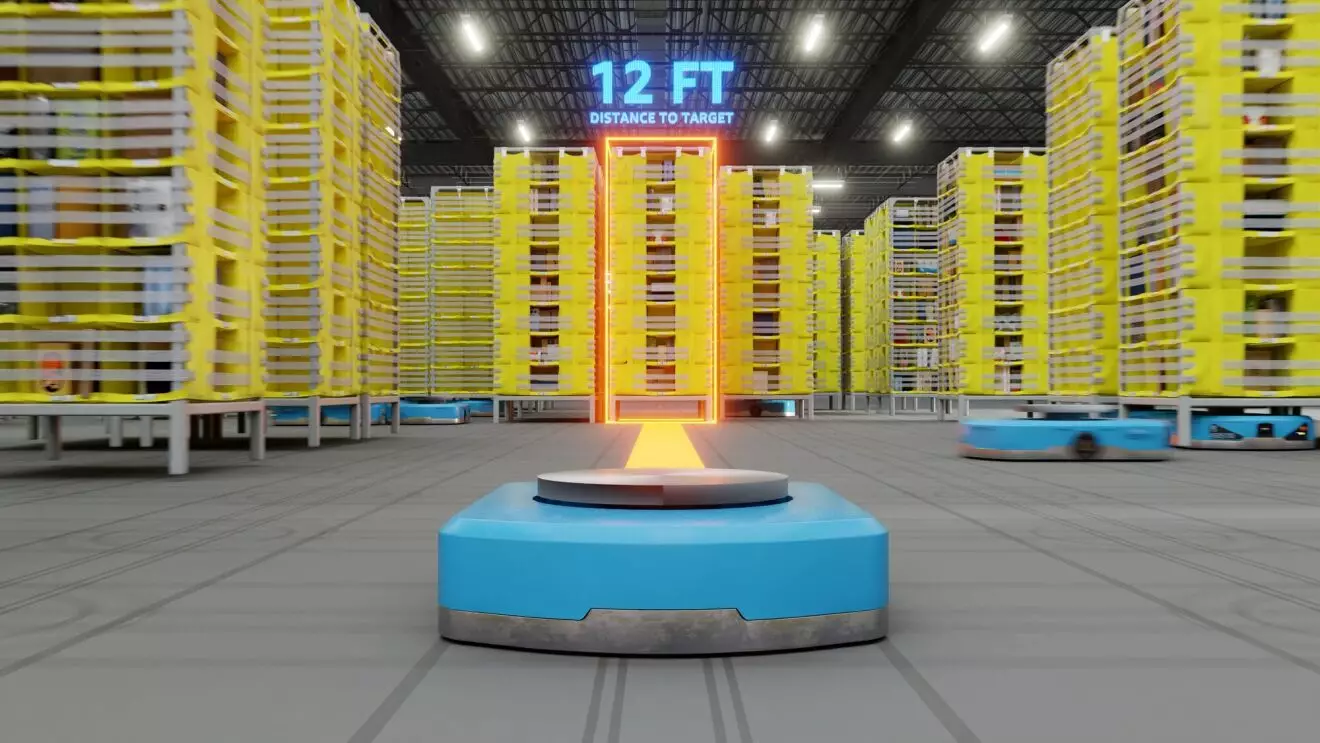Amazon’s relentless adoption of robotics marks a pivotal transformation in the logistics landscape. Achieving the milestone of one million robots deployed over thirteen years is no small feat—it signifies a seismic shift from human-dominant operations to automated dominance. While the company’s workforce exceeds 1.5 million, the robot population approaches a million, blurring traditional boundaries between human labor and machine efficiency. This aggressive automation strategy not only streamlines operations but also dramatically alters the fundamental nature of warehouse logistics. The robots now handle the heavy lifting, navigation, and even delicate tasks like item sorting, a feat that drastically reduces the physical and mental strain on human workers while exponentially increasing productivity.
This scale implies a redefinition of operational standards across fulfillment centers. It isn’t just about replacing manual labor but about establishing a new paradigm where mechanical precision and speed become the norm. Amazon’s claim of being “the world’s largest manufacturer and operator of mobile robotics” underscores its ambition: to dominate supply chain management through technological supremacy. When a company can deploy a million robots, it reaps efficiency gains impossible for humans to match, setting a new industry benchmark that competitors will find hard to challenge.
The Intelligent Evolution: Smarter Robots and AI Integration
Just deploying robots isn’t enough; their intelligence and coordination are critical for maximizing productivity. Amazon’s latest innovation, the DeepFleet AI foundation model, epitomizes this evolution. Designed to optimize robot movements across sprawling fulfillment networks, DeepFleet purportedly enhances travel efficiency by 10%. This margin may seem modest, but in logistics terms, such incremental improvements cascade into massive cost savings and faster deliveries. This AI system isn’t static; it learns and adapts, making the robotic workforce increasingly autonomous.
The introduction of Vulcan, a robot equipped with dual arms, cameras, suction cups, and a “sense of touch,” exemplifies next-generation automation. Its capacity for self-improvement raises questions about the trajectory of robotics—once only capable of pre-programmed tasks, these machines now possess a degree of agility and potential for evolution. This capability not only accelerates warehouse operations but also shifts the balance of power within logistical hubs, emphasizing intelligent systems that can handle complex tasks previously reserved for humans.
The Human Element: From Replacements to Enhanced Roles
Despite fears of robots obliterating jobs, reports suggest a more nuanced reality. The narrative from the Wall Street Journal indicates that automation is replacing monotonous, physically demanding tasks, thereby freeing human workers to engage in supervisory or oversight roles that are less physically taxing and better compensated. The story of Neisha Cruz, who transitioned from picking items to overseeing robots with a salary increase, exemplifies this shift. Her new role, involving oversight rather than manual labor, hints at a workforce that is evolving rather than diminishing.
However, this transformation is neither straightforward nor universally beneficial. While some employees might enjoy more rewarding roles, others may face displacement or job insecurity. The rapid increase in productivity—shifting from 175 packages per employee annually in 2015 to nearly 3,870 today—can create a gig economy-like environment where the human role becomes increasingly peripheral. Though the numbers sound impressive, they also pose questions about workers’ well-being, job quality, and long-term employment stability in an AI-dominant logistics ecosystem.
The Future’s Double-Edged Sword
Automation’s promise of efficiency and speed comes bundled with complex societal implications. The leap from hundreds of packages per worker annually to billions nationwide illustrates a system optimized for maximum throughput but at what cost? The benefits—faster deliveries, reduced costs—are clear, but the potential downsides lurk in the shadows: job displacement, wage stagnation, and the erosion of human-centric work environments.
Amazon’s approach exemplifies a broader trend: automation is not simply an efficiency tool but a force that could fundamentally reshape the structure of employment. For all the claims of workers moving into better roles, the reality might be a shrinking pool of human jobs concentrated in oversight and maintenance, areas susceptible to further automation. The long-term social and economic consequences are profound and demand critical examination. As robots become more autonomous and integral to logistics, society must grapple with questions of fairness, employment rights, and the future of human labor in a world increasingly driven by artificial intelligence.

